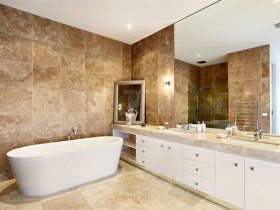Cleaning an oriental rugs at home is risky. I always recommend hiring a professional carpet cleaner to make sure the job is done right and your carpet or rug isn’t ruined. Remember that your oriental rug is an investment and should be treated as such. If you still want to clean your oriental rug at home, here are the steps to follow. These steps serve to clean the wool of an oriental rug; other, more delicate fabrics such as silk should not be attempted and should only be cleaned by a professional rug cleaner.
Step 1: Remove dirt
Vacuum your oriental rug. Only vacuum the surface of the rug. Turn it over and vacuum it thoroughly. This should be done once a month as a routine cleaning process to reduce the amount of dirt trapped deep in the fibers of your rugs. Oriental rugs can trap dirt in the fibers and create a sandpaper effect every time you walk on them.
Step 2: Fringe
If your oriental rug has fringes around the edges, do not dust it. When you vacuum, the fringes will be stressed by the vacuum bristles, which stress the fibers, or worse, they will fall apart and suck them into the vacuum forever. Just place the brushes under the carpet. If you pick up some of the brushes, do not pull them out as you may break them. Simply turn off the vacuum cleaner and manually remove all lint from the vacuum cleaner.
Step 3: Fabric
Place your oriental rug outdoors in a vertical position. Using a broom handle or pole, gently tap the carpet to remove any dust that may still be trapped in the carpet fibers. This will cause a lot of dust, so be prepared.
Step 4: Vacuum again
After you have removed all the dust from the oriental rug, you will need to vacuum again to remove any dust or dirt that has been removed with a broom or stick (step 3).
Step 5: Prepare the cleaning surface
Clean any dust or dirt from the area you cleaned the oriental rug with a hose and some soap. It is better to clean the carpet on an inclined path to avoid water accumulation.
Step 6: Wet the carpet
Once your rug is in a clean area, lay it on the opposite side facing the sky. Note the direction of the rod. Wash the carpet with the cold water running in the same direction as the pile of the carpet (you can use a garden hose). Make sure it is evenly and well wet.
Step 7: Shampoo
Using a 3-5 gallon bucket, fill the water with a tablespoon or two of mild liquid detergent. Stir until grains are visible. If necessary, add a milder detergent. Always test the area before applying the entire carpet. At the same time (an assistant may be needed), pour the mixture of detergent and water onto the carpet, stirring constantly with a clean brush. Do not scrub too hard, you will only try to disrupt the fibers. Make sure the brushes come into contact with the back of the oriental rug evenly by scrubbing back and forth, up and down. Repeat as needed to top up the detergent mixed with water as needed.
Step 8: Rinse and repeat
Wash the carpet thoroughly and make sure there is no detergent left on the carpet. You may need to go through the fibers with a bristle brush to get all the dirt out. Repeat step 7. This time the brush only works in the direction of the pile. Do not rub, do not move back and forth, up and down. Simply move the brush in the direction of the rug pile. Once all deposits are removed (you will see that the stream of water is as clean as possible), you can start the drying process.
Step 9: Dry
Once all dirt has been removed and the oriental rug is clean, squeeze the excess water out of the rug. Move only in the direction of the pile of the carpet. When you finish wringing the rug, you can place a few dry towels on top of the rug and run them to absorb as much water as possible. Once you have removed most of the water, take the oriental rug inside and hang it to dry. Less ground contact is better.










